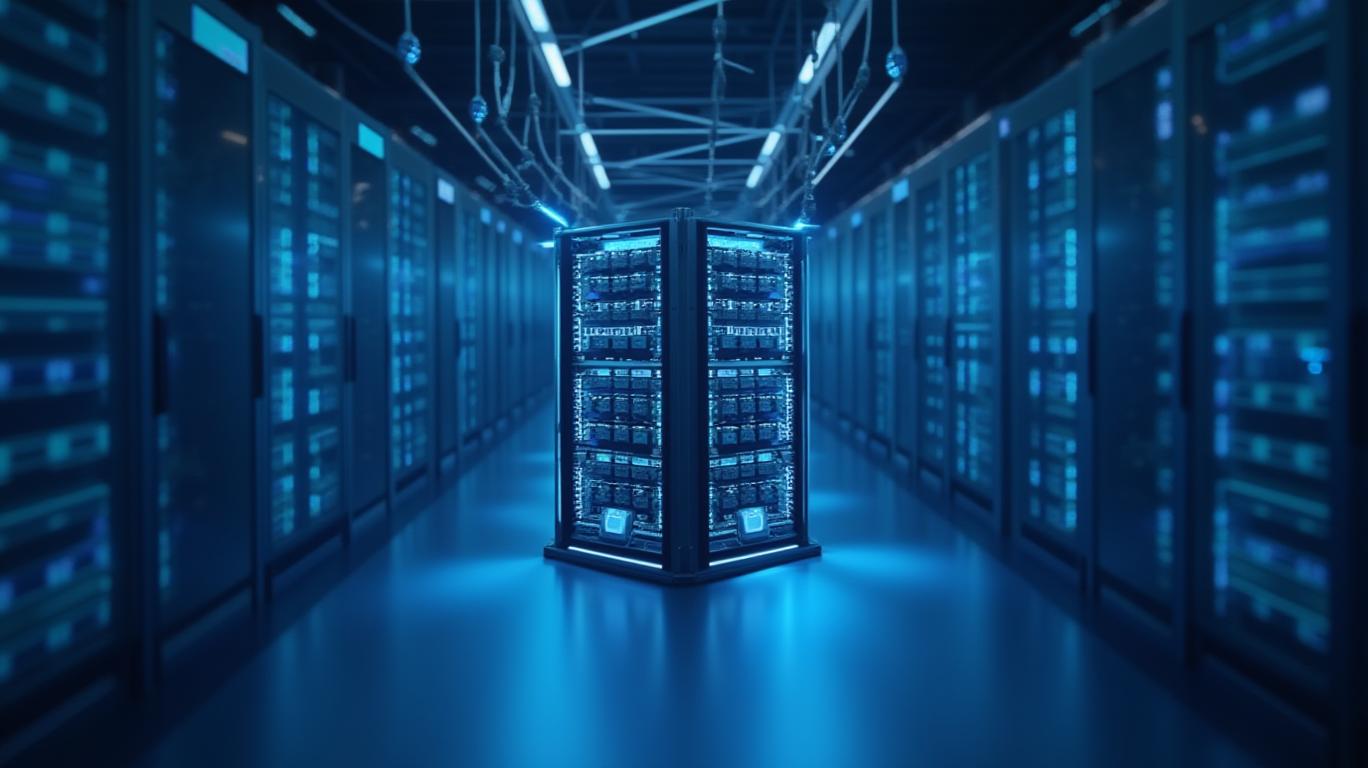Nokia’s Aurelis Optical LAN: A Fiber-Driven Revolution in Enterprise Networking?
The rise of high-bandwidth applications—from AI-driven analytics to immersive virtual environments—is reshaping enterprise networking demands. In this context, Nokia’s Aurelis Optical LAN emerges as a bold response to the need for future-proof connectivity. Launched in 2025, this fiber-based solution promises not only to meet current bandwidth requirements but to outlast the lifecycle of legacy copper cabling by decades. Let us dissect its technical merits, market positioning, and strategic implications for investors.

Technical Superiority: Speed, Efficiency, and Longevity
Aurelis delivers speeds of 1 Gb/s to 25 Gb/s today, with an upgrade path to 100 Gb/s—a critical feature as data demands grow exponentially. Its fiber optic backbone, designed to last over 50 years, contrasts sharply with copper’s shorter lifespan and higher maintenance costs.
The system’s open APIs and automation tools further enhance its appeal, enabling seamless integration with existing networks. A case in point is FairNetz GmbH, which deployed Aurelis to modernize a multi-building campus, slashing power and cabling costs while supporting Wi-Fi 7. This blend of scalability, energy efficiency, and adaptability positions Aurelis as a linchpin for green IT initiatives, a trend gaining traction among ESG-conscious investors.
Market Momentum and Strategic Acumen
Nokia’s acquisition of Infinera in early 2025 has been pivotal. The deal boosted its global market share (excluding China) to 26%, securing its leadership in optical networking. In Q1 2025, its Optical Networks division reported a 15% year-on-year sales surge, fueled by demand from hyperscale data centers and enterprises. This outperformance suggests a strategic win: by bundling Aurelis with AI-driven network management and Fixed Wireless Access via 5G, Nokia is not just selling cables but a comprehensive connectivity ecosystem.
The Infinera integration also aims to generate €200 million in operational savings by 2027, freeing capital for R&D in emerging areas like quantum-resistant encryption or edge computing. Such investments could further cement Nokia’s edge, particularly as rivals like Cisco and Huawei grapple with regional regulatory headwinds.
Competitive Landscape and Risks
Nokia’s dominance excludes the Chinese market, where local giants like Huawei and ZTE hold sway. In global markets, Cisco and Juniper remain formidable, offering hybrid copper-fiber solutions. However, Nokia’s focus on long-term TCO reduction and sustainability could tip the scales in sectors prioritizing green IT. For instance, hospitals and universities—already Aurelis’ primary adopters—may prefer infrastructure that avoids frequent upgrades, aligning with their capital preservation goals.
Another risk is commoditization. While fiber’s longevity is a strength, it could also mean slower replacement cycles, capping growth. Yet Nokia’s strategic emphasis on “five-nines” (99.999%) uptime and integration with Wi-Fi 7 positions Aurelis as a premium, high-margin product, mitigating this risk.
Conclusion: A Long-Term Bet on Fiber’s Future
Nokia’s Aurelis Optical LAN is not merely an upgrade but a paradigm shift. With 700 installations globally by 2025, a 15% sales growth spurt, and a 26% market share in optical networks, the strategy is already bearing fruit. The technical and financial case is compelling: a 50-year infrastructure lifespan slashes TCO, while open APIs and automation cater to enterprise realities.
For investors, the calculus hinges on two trends: the global shift to fiber-optic dominance and the ascendancy of sustainability-driven IT spending. With €200 million in synergies from the Infinera deal and a product suite aligned with Wi-Fi 7 and AI, Nokia appears well-positioned to capitalize on both.
Yet risks remain. Competitors’ pricing power and regional barriers in China could constrain growth. Still, the data underscores a compelling thesis: Aurelis is not just a product but a decade-long bet on fiber’s supremacy in enterprise networking. In a world where data demands double every two years, such foresight may prove invaluable.
The verdict? For investors seeking exposure to the next wave of connectivity, Nokia’s Aurelis—and the strategic vision behind it—merits serious consideration.

Comments
No comments yet